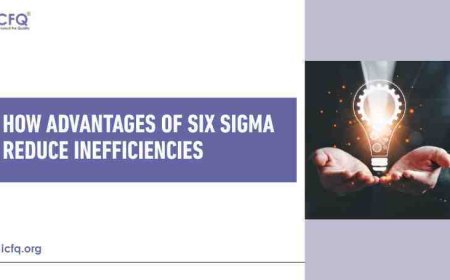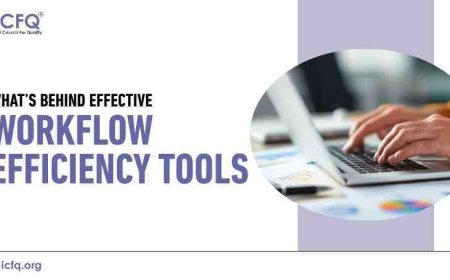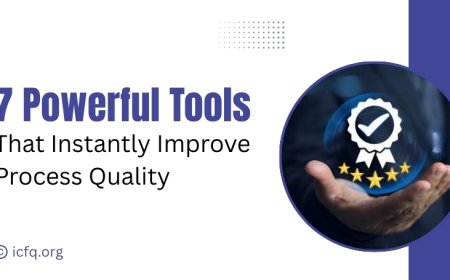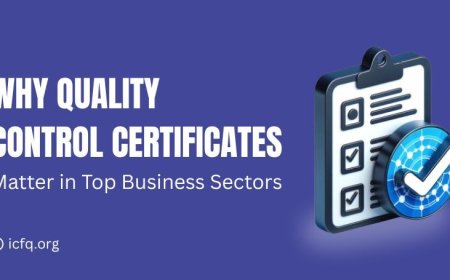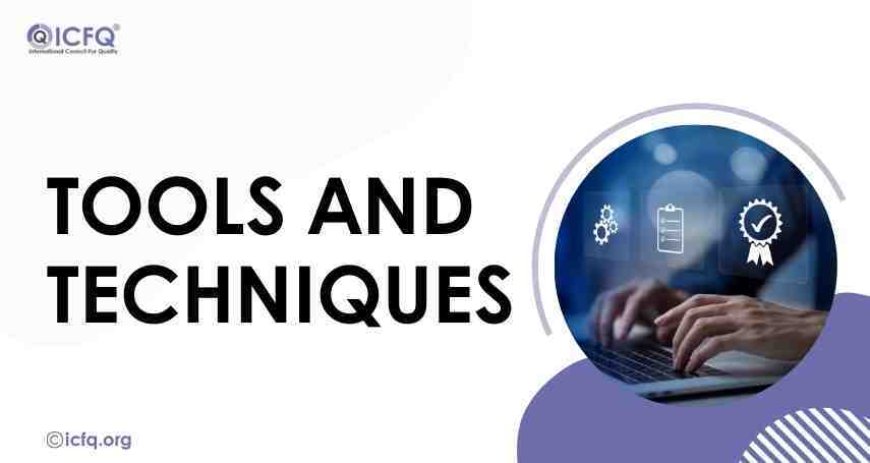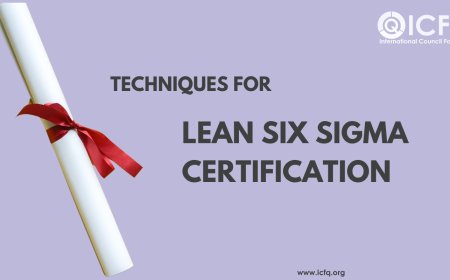Lean Six Sigma offers a powerful methodology to achieve these goals by combining the principles of Lean manufacturing and Six Sigma quality management. In this pillar page, we'll delve into the core tools and techniques that drive Lean Six Sigma success, empowering you to optimize processes, reduce waste, and enhance quality. Lean Six Sigma is a methodology that combines the principles of Lean manufacturing and Six Sigma to improve processes, reduce waste, and enhance quality within organizations.
Lean: Lean manufacturing, originally developed by Toyota, focuses on minimizing waste and maximizing value in processes. It identifies eight types of waste, including overproduction, waiting, transportation, inappropriate processing, excess inventory, unnecessary motion, defects, and underutilized talent. Lean principles aim to streamline workflows, eliminate non-value-added activities, and create a more efficient and responsive operation.
Six Sigma: Six Sigma is a data-driven methodology aimed at reducing defects and variations in processes to achieve near-perfection in quality. It follows a structured approach, typically using the DMAIC (Define, Measure, Analyze, Improve, Control) framework, to identify and eliminate root causes of problems. Six Sigma relies heavily on statistical tools and techniques to measure process performance, identify opportunities for improvement, and ensure sustainable results.
By integrating Lean and Six Sigma principles, Lean Six Sigma offers a comprehensive approach to process improvement. It focuses on identifying and eliminating waste while also reducing defects and variations in processes, leading to increased efficiency, improved quality, and enhanced customer satisfaction. Lean Six Sigma emphasizes the importance of data-driven decision-making, continuous improvement, and a customer-centric approach to business operations.
Lean Tools and Techniques
-
Value Stream Mapping (VSM): VSM is a visual representation of the end-to-end process flow, from raw materials to the delivery of the final product or service to the customer. It helps identify all steps in the process, including value-added and non-value-added activities, as well as areas of waste. By analyzing the value stream map, teams can identify opportunities to streamline processes, eliminate bottlenecks, reduce lead times, and optimize overall flow.
-
5S Methodology: The 5S methodology involves five steps: Sort, Set in order, Shine, Standardize, and Sustain. It aims to create a clean, organized, and efficient work environment. Sorting involves removing unnecessary items from the workspace. Setting in order involves organizing tools, materials, and equipment for easy access. Shining involves cleaning and maintaining the workspace. Standardizing involves establishing procedures and standards for maintaining the 5S system. Sustaining involves continuously practising and improving the 5S system.
-
Kaizen Events: Kaizen, meaning "continuous improvement" in Japanese, involves short-term improvement activities focused on solving specific problems or addressing opportunities for improvement. Kaizen events typically last from a few days to a week and involve cross-functional teams working together to implement rapid changes and improvements in a targeted area of the organization.
-
Just-in-Time (JIT): JIT is a production strategy aimed at minimizing inventory levels and reducing waste by producing only what is needed, when it is needed, and in the right quantity. By implementing JIT, organizations can reduce storage costs, minimize lead times, improve cash flow, and increase responsiveness to customer demand.
-
Kanban: Kanban is a visual scheduling system used to control and manage workflow. It involves the use of kanban cards or signals to signal the need for production or replenishment of materials. Kanban helps optimize inventory levels, reduce waste, improve flow, and increase productivity by ensuring that work is pulled through the system based on actual demand.
-
Poka-Yoke (Error Proofing): Poka-yoke refers to the implementation of mechanisms or devices to prevent errors or defects from occurring in processes. Poka-yoke techniques include designing foolproof processes, incorporating error-detecting devices, and providing visual cues to guide operators, thereby reducing the likelihood of mistakes and defects.
-
Total Productive Maintenance (TPM): TPM is a strategy aimed at maximizing the efficiency and effectiveness of equipment and machinery by focusing on proactive maintenance, employee involvement, and continuous improvement. TPM helps minimize unplanned downtime, reduce equipment failures, improve asset utilization, and enhance overall equipment effectiveness (OEE).
-
Standard Work: Standard work involves documenting the best-known way to perform a task based on current best practices and agreed-upon standards. Standard work provides a baseline for consistent performance, facilitates training and skills development, and serves as a reference for continuous improvement efforts.
Six Sigma Tools and Techniques
DMAIC: DMAIC is a structured problem-solving methodology used to identify, analyze, and improve processes.
-
Define: Define the problem, project goals, and customer requirements.
-
Measure: Measure process performance and collect data to establish a baseline.
-
Analyze: Analyze data to identify root causes of problems and opportunities for improvement.
-
Improve: Implement solutions to address root causes and improve process performance.
-
Control: Establish controls to sustain improvements and prevent the recurrence of problems.
Root Cause Analysis: Root cause analysis techniques, such as Cause-and-Effect Diagrams (Fishbone diagrams) and 5 Whys, are used to systematically identify the underlying causes of problems or defects. Cause-and-effect diagrams help visualize the potential causes of a problem, while the 5 Whys technique involves asking "why" multiple times to uncover deeper layers of causality.
Statistical Process Control (SPC): SPC involves monitoring and controlling process variations using statistical techniques such as control charts. Control charts help distinguish between common cause variation (inherent to the process) and special cause variation (due to external factors or assignable causes), enabling teams to take appropriate corrective actions.
Design of Experiments (DOE): DOE is a statistical method used to systematically vary process factors to identify the optimal settings for improving process performance. By conducting controlled experiments, teams can assess the impact of different variables on process outcomes and identify the most significant factors affecting performance.
Failure Mode and Effects Analysis (FMEA): FMEA is a proactive approach used to identify and mitigate potential failure modes within processes, products, or systems. FMEA involves systematically identifying potential failure modes, assessing their severity, occurrence, and detection, and prioritizing actions to prevent or mitigate their effects.
Regression Analysis: Regression analysis is a statistical technique used to understand the relationship between input variables (independent variables) and output responses (dependent variables) in a process. Regression analysis helps identify significant factors influencing process performance and develop predictive models to optimize process settings.
Hypothesis Testing: Hypothesis testing involves statistical tests used to determine whether observed differences in process data are statistically significant. Common hypothesis tests include t-tests, chi-square tests, ANOVA (analysis of variance), and others, which help validate assumptions, make data-driven decisions, and assess the effectiveness of process improvements.
Capability Analysis: Capability analysis involves assessing process capability to determine whether a process is capable of meeting customer requirements. Measures of process capability, such as Cp, Cpk, Pp, and Ppk, help quantify process performance relative to specification limits and identify opportunities for improvement.
These tools and techniques are integral to Lean Six Sigma methodologies, empowering organizations to identify opportunities for improvement, analyze data, and implement effective solutions to drive process optimization, waste reduction, and quality improvement initiatives.
Integration of Lean and Six Sigma
The integration of Lean and Six Sigma methodologies, often referred to as Lean Six Sigma, creates a powerful approach to process improvement and organizational excellence. Integration occurs at multiple levels, including philosophy, tools, and techniques, resulting in synergistic benefits.
Philosophical Alignment:
-
Both Lean and Six Sigma share a common goal of continuous improvement and customer focus.
-
Lean emphasizes the elimination of waste and the maximization of value-added activities.
-
Six Sigma focuses on reducing variation and defects to achieve near-perfect quality.
-
Integration involves aligning these philosophies to create a holistic approach to process improvement that addresses both waste reduction and quality enhancement.
Complementary Tools and Techniques:
-
Lean tools and techniques are often used to identify and eliminate waste in processes, while Six Sigma tools and techniques are utilized to reduce variation and defects.
-
For example, Value Stream Mapping (VSM) from Lean can be used to identify areas of waste in a process, while Statistical Process Control (SPC) from Six Sigma can be used to monitor and control process variation.
-
By integrating these complementary tools, organizations can address multiple dimensions of process performance simultaneously, leading to more comprehensive improvements.
DMAIC and Lean Principles:
-
The DMAIC (Define, Measure, Analyze, Improve, Control) methodology of Six Sigma provides a structured framework for problem-solving and process improvement.
-
Lean principles, such as continuous flow, pull systems, and standardized work, can be integrated into the DMAIC framework to enhance its effectiveness.
-
For example, Lean principles may inform the Define phase by helping to identify customer value and waste, or they may be incorporated into the Improve phase to redesign processes for flow and efficiency.
Cultural Integration:
-
Integration of Lean and Six Sigma requires a cultural shift towards a mindset of continuous improvement, data-driven decision-making, and customer-centricity.
-
Organizations need to foster a culture that encourages collaboration, empowers employees to identify and solve problems, and rewards innovation and excellence.
-
By integrating Lean and Six Sigma principles into the organizational culture, companies can create a shared language and mindset for driving improvement initiatives at all levels.
Training and Certification:
-
Training programs and certification pathways for Lean Six Sigma professionals provide individuals with a comprehensive skill set that encompasses both Lean and Six Sigma methodologies.
-
These programs typically cover a range of tools and techniques from both Lean and Six Sigma, as well as the philosophical underpinnings of each approach.
-
By equipping employees with the knowledge and skills to integrate Lean and Six Sigma principles effectively, organizations can build internal capabilities for sustained improvement.
Project Selection and Prioritization:
-
Integrated Lean Six Sigma approaches often involve strategic project selection and prioritization based on organizational goals, customer needs, and potential impact.
-
Projects may be selected based on criteria such as their alignment with business objectives, potential for waste reduction or quality improvement, and feasibility of implementation.
-
By aligning improvement projects with strategic priorities and integrating Lean and Six Sigma methodologies, organizations can maximize the impact of their improvement efforts and drive meaningful results.
Challenges in Lean Six Sigma
Implementing Lean Six Sigma methodologies comes with its own set of challenges, which can vary depending on the organization, industry, and specific circumstances. Here are some common challenges faced by organizations adopting Lean Six Sigma:
Cultural Resistance: Resistance to change is a prevalent challenge in Lean Six Sigma implementation. Some employees may be hesitant to embrace new methodologies, particularly if they perceive them as threatening their established ways of working. Overcoming cultural resistance requires effective change management strategies, clear communication, and leadership support.
Lack of Leadership: Successful Lean Six Sigma implementation requires strong support and commitment from organizational leaders. Without leadership buy-in, initiatives may lack resources, direction, and momentum. Leaders need to understand the value of Lean Six Sigma and actively champion its adoption throughout the organization.
Resource Constraints: Implementing Lean Six Sigma initiatives often requires dedicated resources, including financial investment, training, and personnel. Limited resources can impede progress and hinder the success of improvement projects. Organizations must allocate adequate resources and prioritize initiatives strategically to maximize impact.
Inadequate Training and Skill Gaps: Lean Six Sigma methodologies rely on specialized skills and knowledge in areas such as statistical analysis, process improvement, and change management. Lack of proper training and skill gaps among employees can hinder the effective application of Lean Six Sigma tools and techniques. Comprehensive training programs and ongoing skill development are essential to address this challenge.
Poor Data Quality: Data-driven decision-making is a fundamental aspect of Lean Six Sigma. However, organizations may encounter challenges related to data accuracy, availability, and relevance. Poor data quality can undermine the credibility of the analysis and lead to erroneous conclusions. Investing in data management practices, data validation processes, and technology infrastructure can help address this challenge.
Siloed Mindset and Lack of Collaboration: Lean Six Sigma initiatives often involve cross-functional collaboration and breaking down silos between departments. However, organizational silos and departmental boundaries can hinder collaboration and alignment. Overcoming this challenge requires fostering a culture of collaboration, establishing clear communication channels, and incentivizing teamwork and knowledge sharing.
Unrealistic Expectations: Expectations of quick results and immediate success can lead to disappointment and disillusionment with Lean Six Sigma initiatives. Achieving significant and sustainable improvements takes time, dedication, and persistence. Setting realistic expectations, celebrating small wins, and emphasizing the long-term benefits of Lean Six Sigma can help manage expectations and maintain momentum.
Lean Six Sigma combines Lean's focus on eliminating waste with Six Sigma's data-driven approach to improve processes and quality. By integrating these methodologies, organizations can streamline operations, reduce defects, and enhance customer satisfaction. However, challenges such as cultural resistance, leadership buy-in, resource constraints, skill gaps, data quality issues, siloed mindsets, and unrealistic expectations may arise. Overcoming these challenges requires effective change management, strong leadership support, adequate resources, comprehensive training, and a collaborative culture. Despite the obstacles, implementing Lean Six Sigma can lead to increased efficiency, improved quality, and sustained competitive advantage. By addressing challenges and leveraging the synergies between Lean and Six Sigma, organizations can drive continuous improvement and achieve excellence in their operations.
